

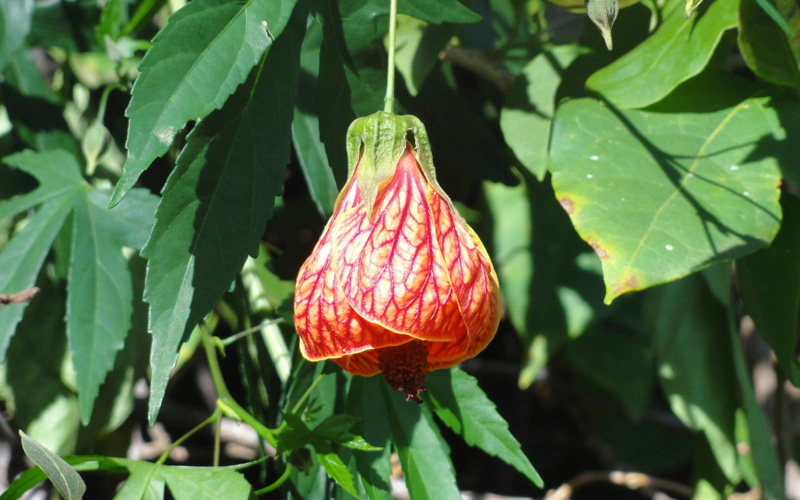
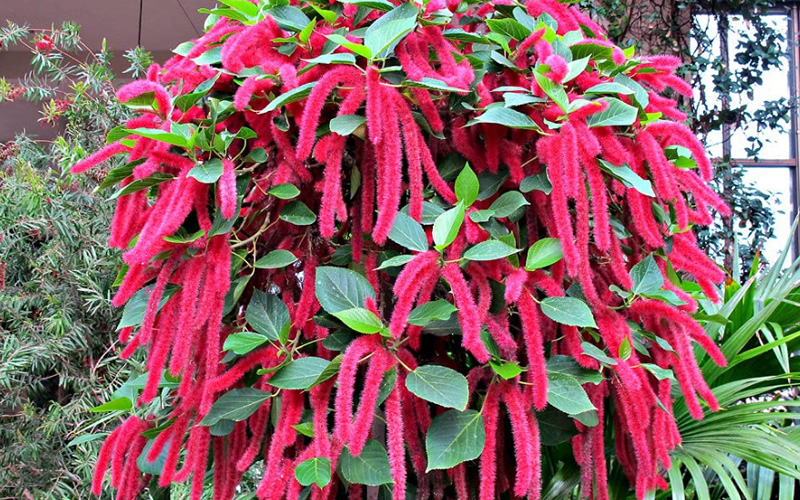
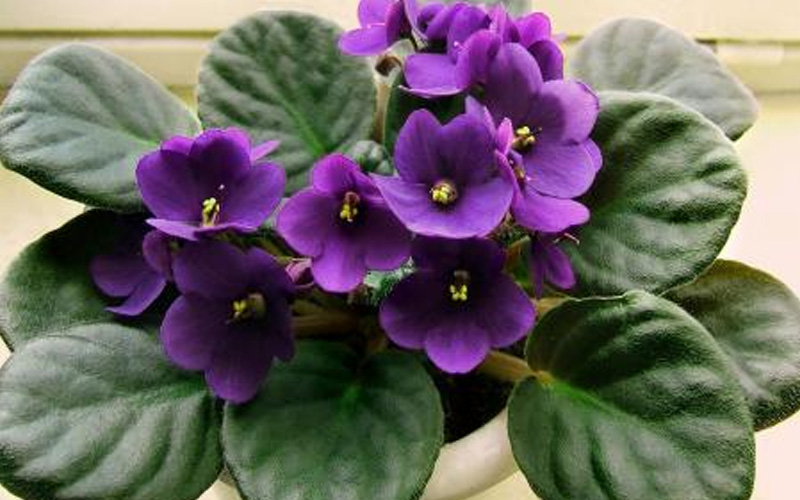
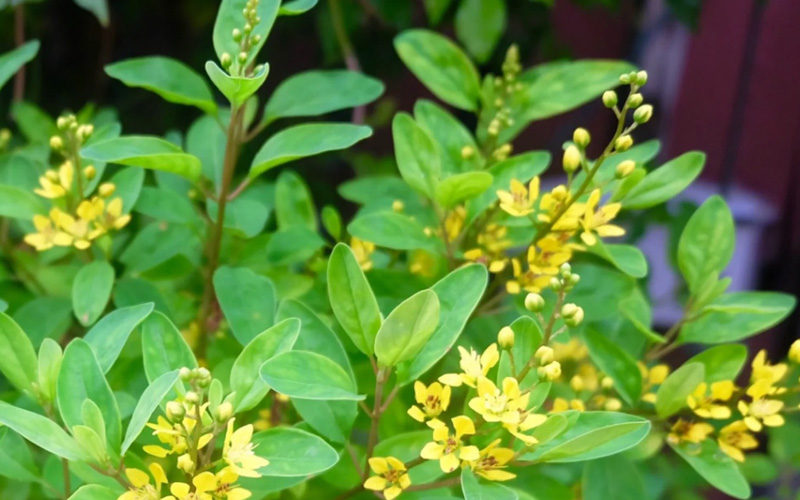
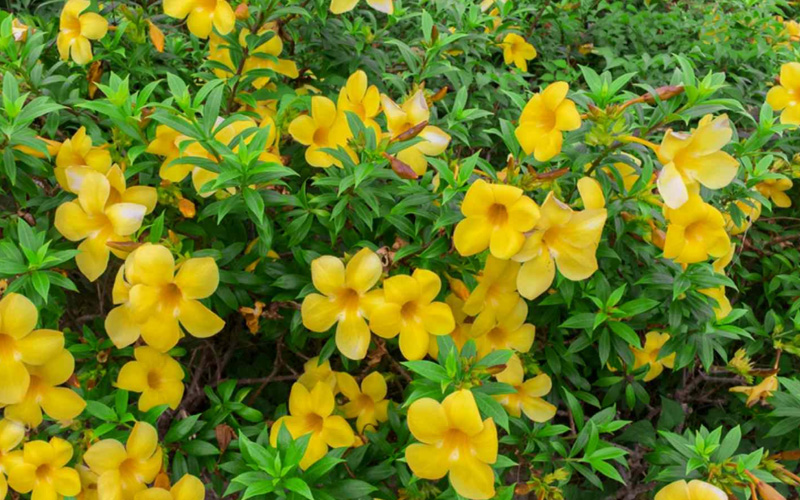
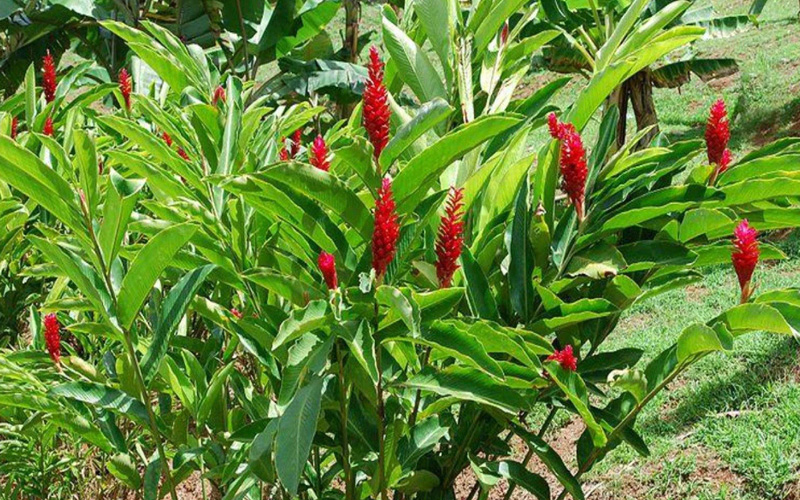
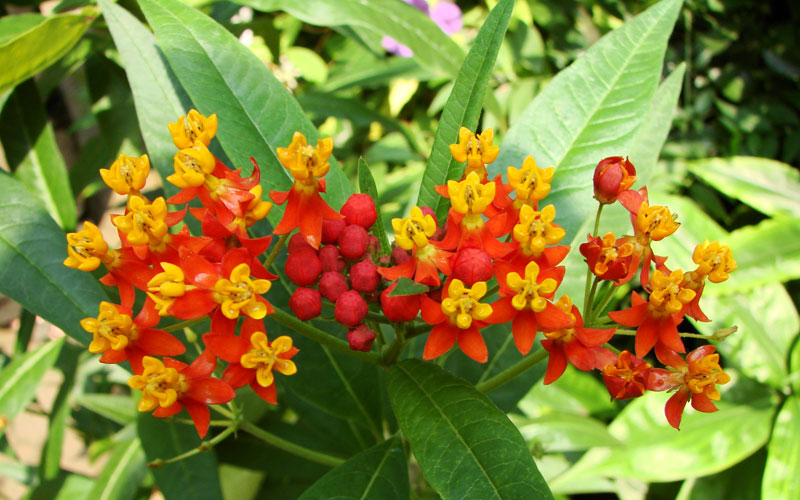
Typical plants are evergreen perennial subshrubs that grow up to 1 m (3.3 ft) tall and have pale gray stems. The leaves are arranged oppositely on the stems and are lanceolate or oblong-lanceolate shaped ending in acuminate or acute tips. Like other members of the genus, the sap is milky. The flowers are in cymes with 10-20 flowers each. They have purple or red corollas and corona lobes that are yellow or orange. Flowering occurs nearly year round.
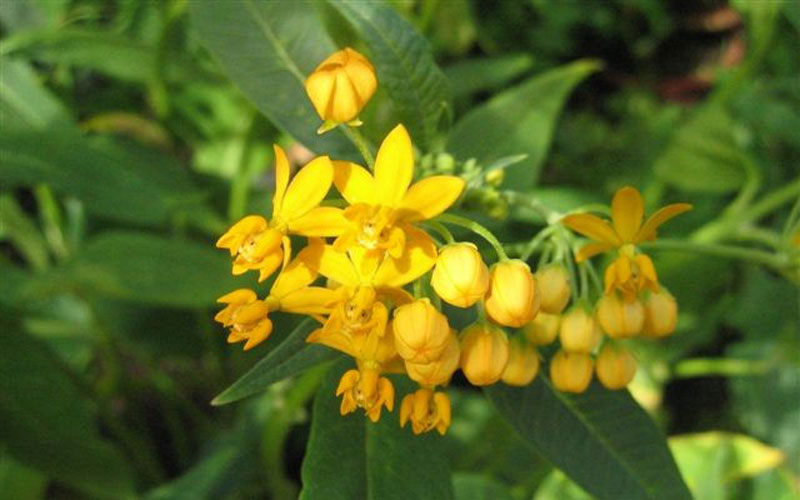
Asclepias curassavica, the Mexican Butterfly Bush, Scarlet Milkweed or Blood Flower, is a small shrubby semi-deciduous perennial with attractive long lanceolate foliage and showy exotic flowers that are orange-red and yellow. It is very easy to grow and very fast-growing and is predominantly grown for its ability to attract butterflies which feed on its pollen rich-flowers. The foliage is also a food for many butterfly larvae.
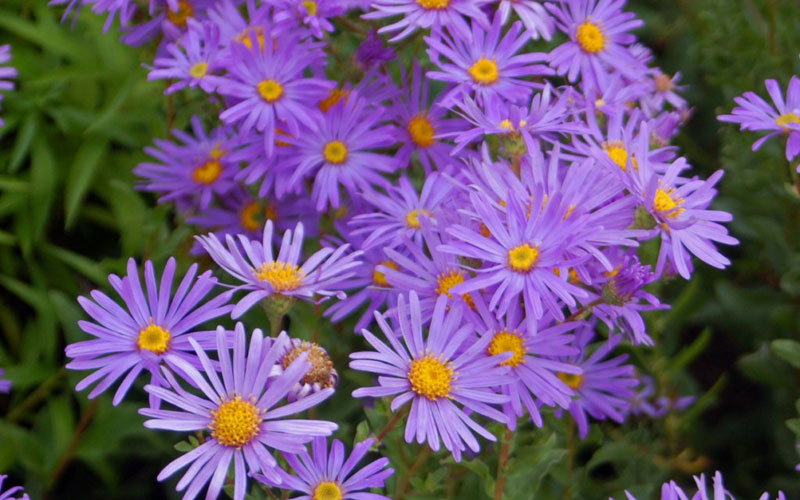
Aster amellus reaches on average a height of 20–50 centimetres (7.9–19.7 in). The stem is erect and branched, the leaves are dark green. The basal leaves are obovate and petiolated, the cauline ones are alternate and sessile, increasingly narrower and lanceolate. The flowers are lilac. The flowering period extends from July through October. The hermaphroditic flowers are either self-fertilized (autogamy) or pollinated by insects (entomogamy). The seeds are an achene that ripens in October.
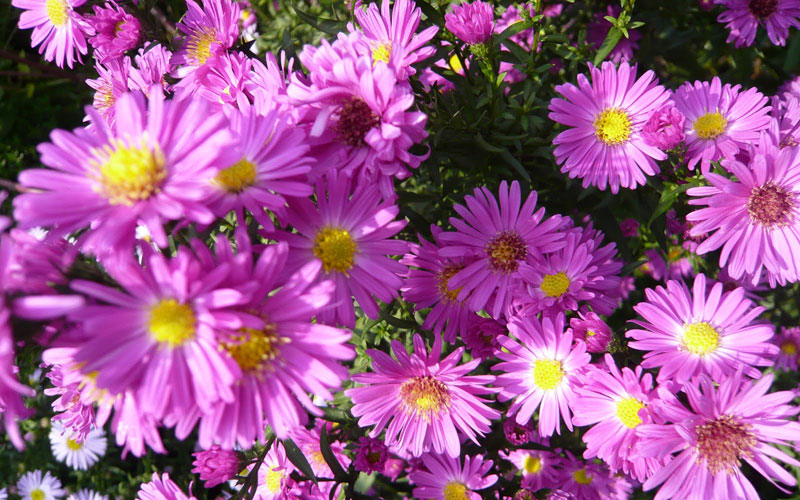
Aster. No fall garden is complete without asters. These late-flowering beauties add a much-needed color boost just when the garden starts to fade. They are also prized by migrating Monarch butterflies who dine on the nectar-rich blooms on their trip south. Asters grow 15-36 inches tall, depending on variety. Colors include blue, purple, burgundy, pink, and white. Small varieties of aster also thrive in containers. Zones 4-8
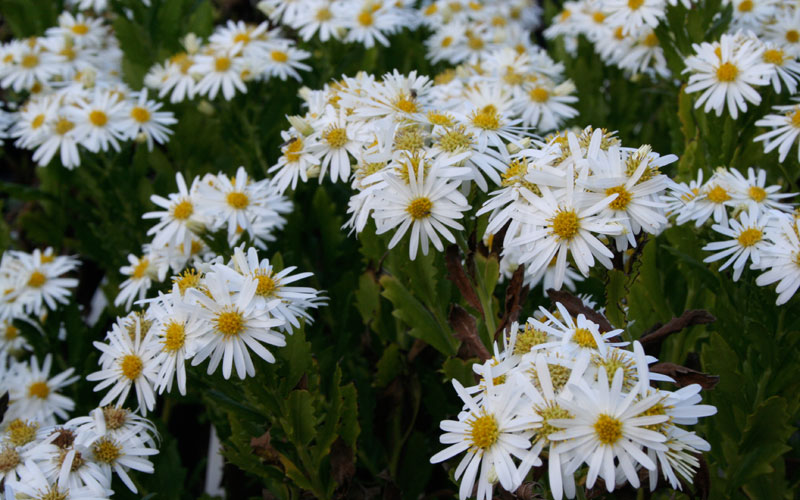
Asters are beautiful perennials that are found wild in North America and southern Europe. The genus Aster includes some 600 species of widely distributed flowering plants in the family Asteraceae.
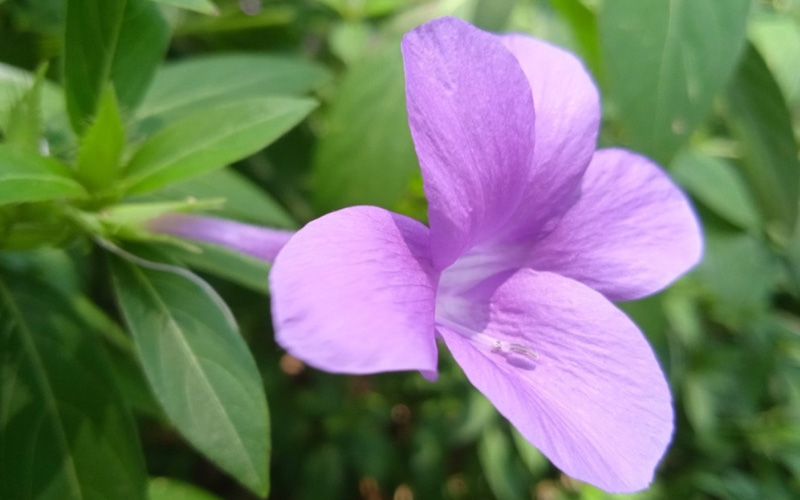
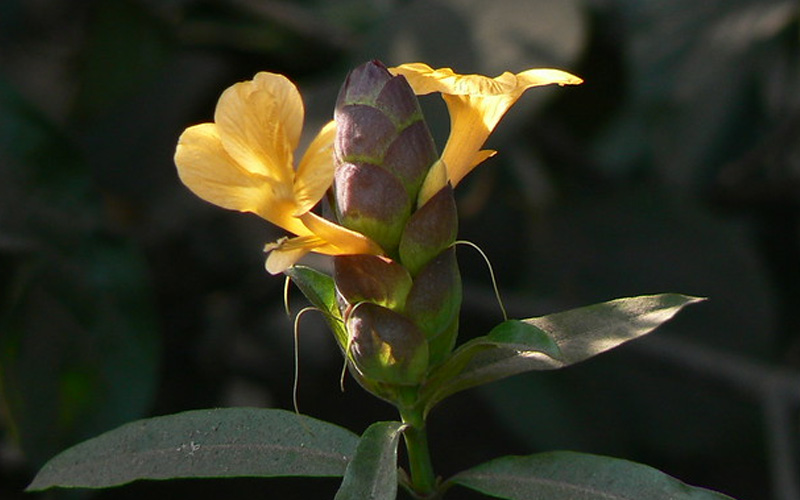
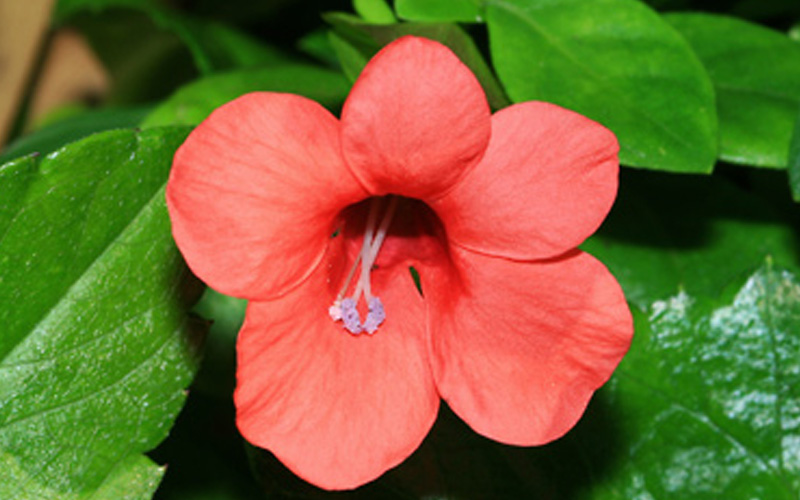
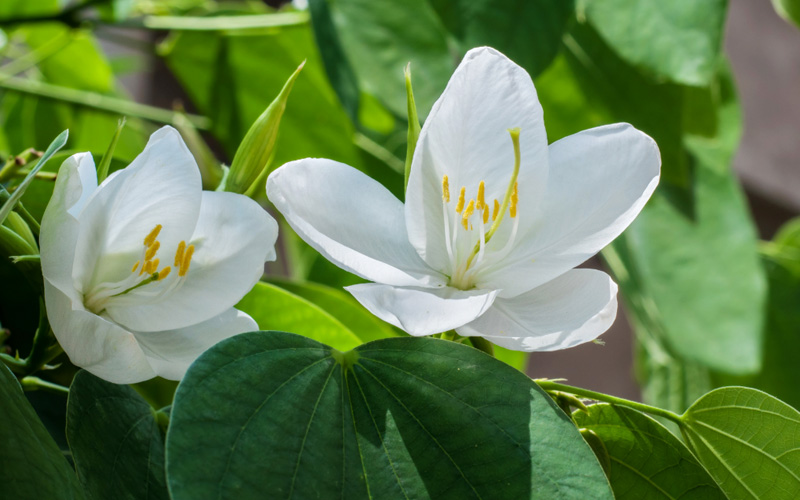
Bauhinia acuminata is a species of flowering shrub native to tropical southeastern Asia. Common names include: Dwarf White Bauhinia, White Orchid-tree and Snowy Orchid-tree and (Bengali). The exact native range is obscure due to extensive cultivation, but probably from Malaysia, Indonesia (Java, Borneo, Kalimantan, Lesser Sunda Islands), and the Philippines.
It grows two to three meters tall. Like the other Bauhinia species, the leaves are bilobed, shaped like an ox hoof; they are 6 to 15 centimeters long and broad, with the apical cleft up to 5 cm deep; the petiole is 1.5 to 4 centimeters long. The flowers are fragrant, 8 to 12 centimeters in diameter, with five white petals, ten yellow-tipped stamens and a green stigma. The fruit is a pod 7.5 to 15 centimeters long and 1.5 to 1.8 centimeters broad. The species occurs in deciduous forests and scrub.
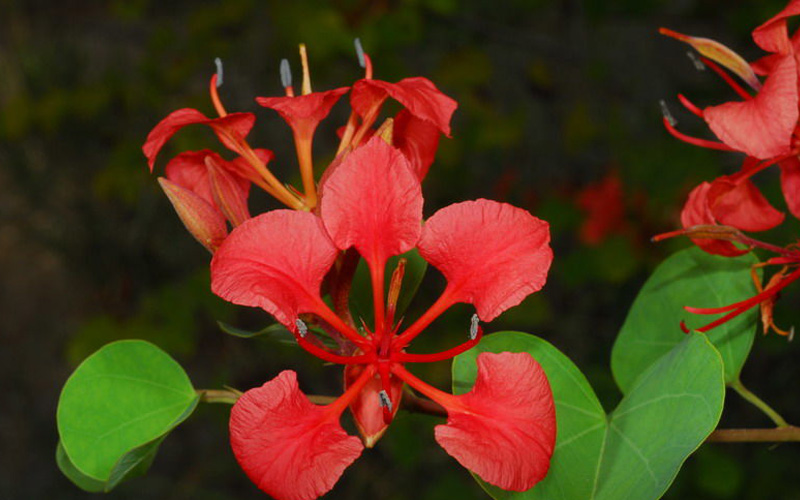
Bauhinia galpinii is a species of shrub in the family Fabaceae. It is endemic to parts of eastern and southern Africa, where its popular name is “Pride of De Kaap”. In other places however, it is variously known as Orchid Tree, Red Bauhinia, Nasturtium Bauhinia, African Plume, Red Orchid Bush, and by other informal names. The species name commemorates E. E. Galpin.
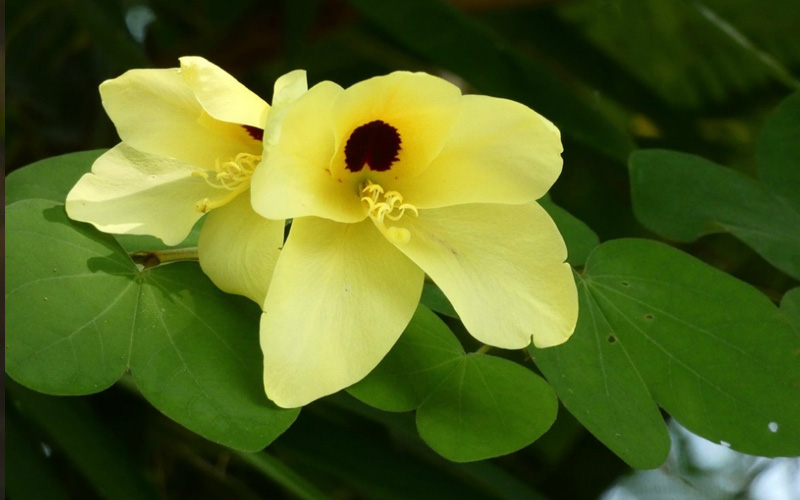
Bauhinia trees typically reach a height of 6–12 m and their branches spread 3–6 m outwards. The lobed leaves usually are 10–15 cm across.
The five-petaled flowers are 7.5–12.5 cm diameter, generally in shades of red, pink, purple, orange, or yellow, and are often fragrant. The tree begins flowering in late winter and often continues to flower into early summer. Depending on the species, Bauhinia flowers are usually in magenta, mauve, pink or white hues with crimson highlights.

Justicia brandegeeana (Mexican shrimp plant, shrimp plant or false hop[2]) is an evergreen shrub in the genus Justicia of the family Acanthaceae, native to Mexico,[1] and also naturalized in Florida.
It grows to 1 m tall (rarely more) with spindly limbs. The leaves are oval, green, 3-7.5 cm long. The flowers are white, extending from red bracts which look a bit like a shrimp, hence the shrub’s common name, shrimp flower.
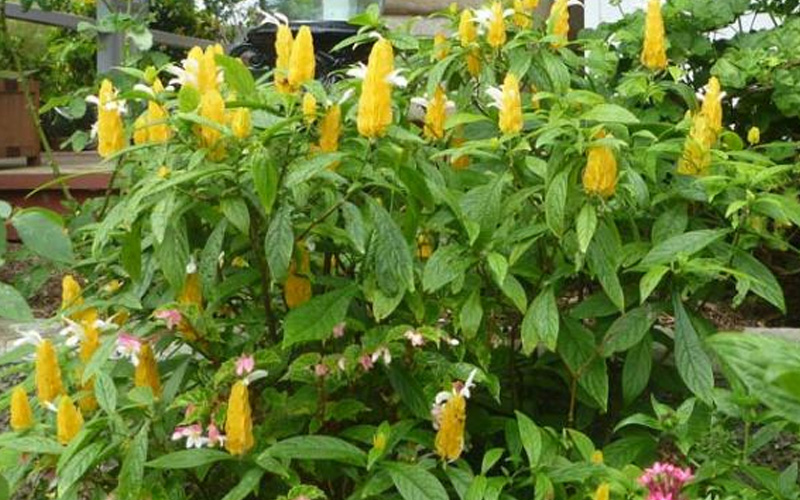
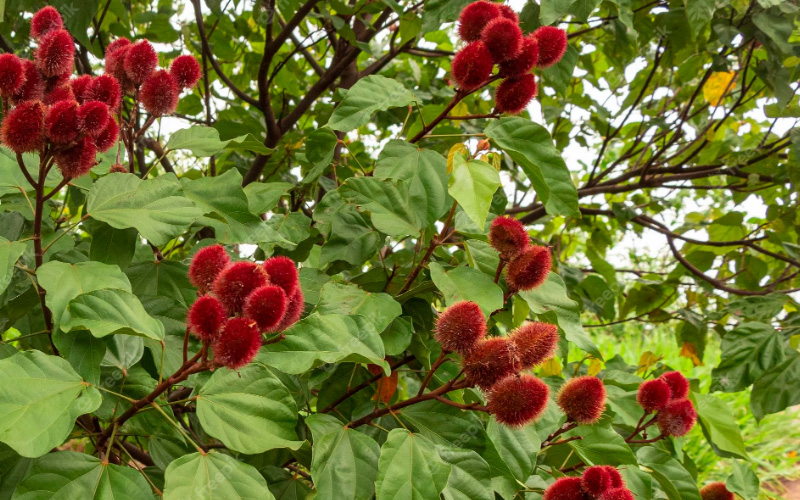
Achiote (Bixa orellana) is a shrub or small tree originating from the tropical region of the Americas. Central and South American natives originally used the seeds to make red body paint and lipstick. For this reason, the achiote is sometimes called the lipstick tree.
The tree is best known as the source of annatto, a natural orange-red condiment (also called “achiote” or “bijol”) obtained from the waxy arils that cover its seeds. The ground seeds are widely used in traditional dishes in South and Central America, the Caribbean, and Mexico; such as cochinita pibil, chicken in achiote and caldo de olla. Annatto and its extracts are also used as an industrial food coloring to add yellow or orange color to many products such as butter, cheese, sausages, cakes, and popcorn.
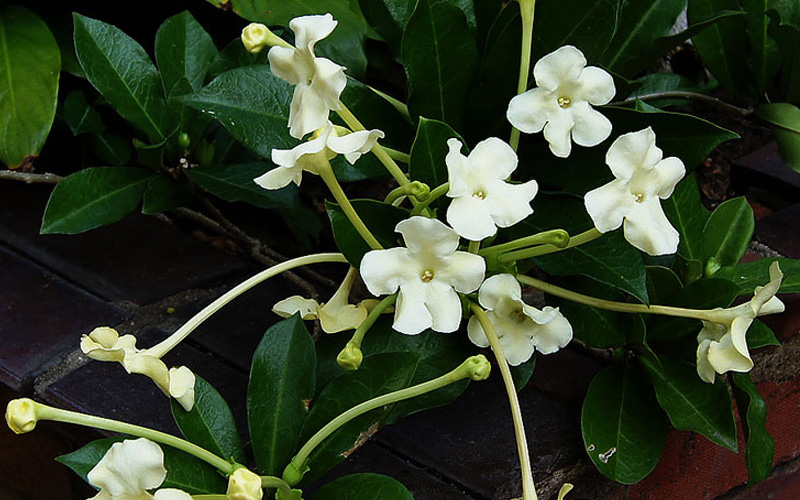
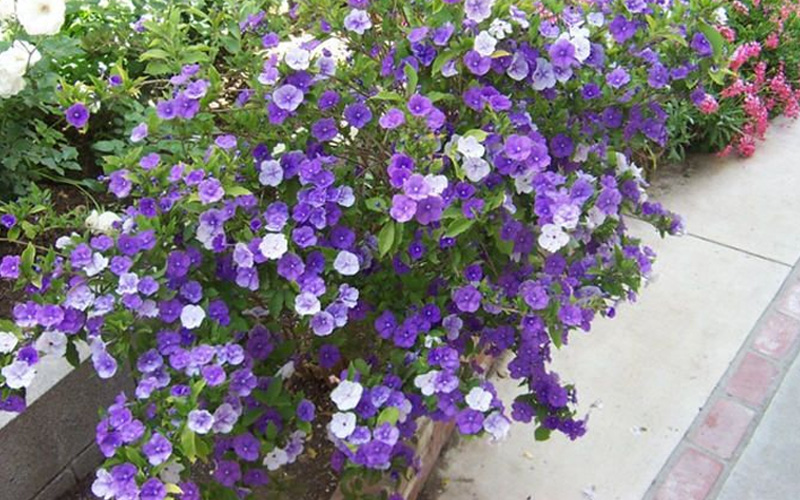
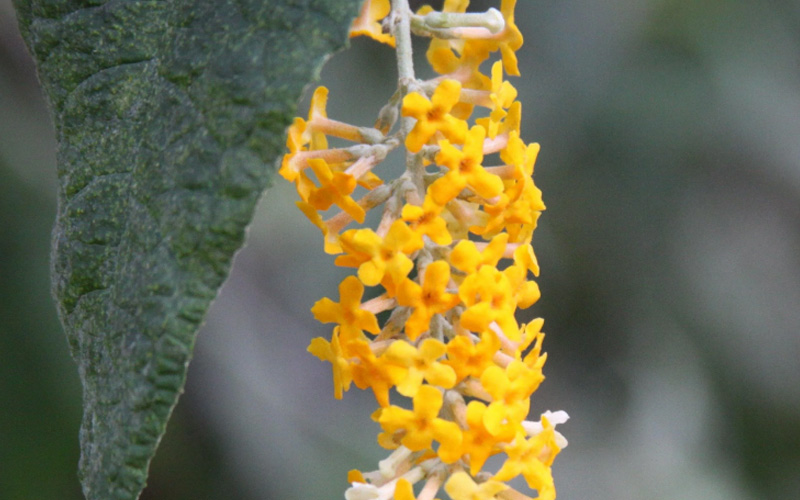
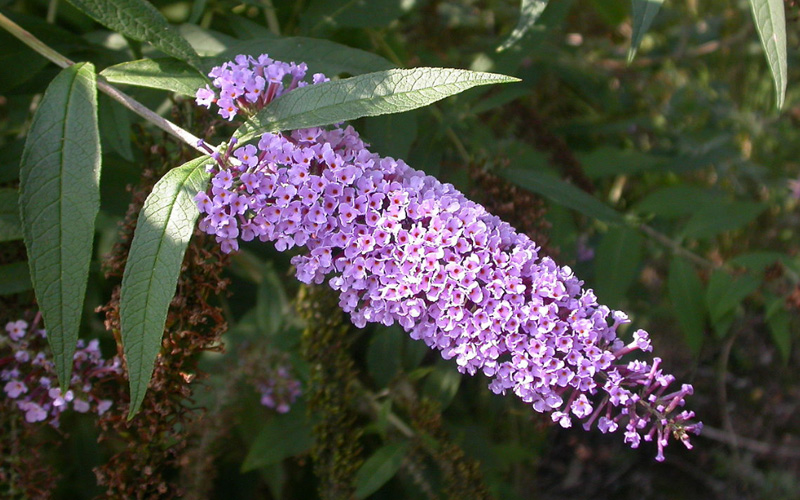
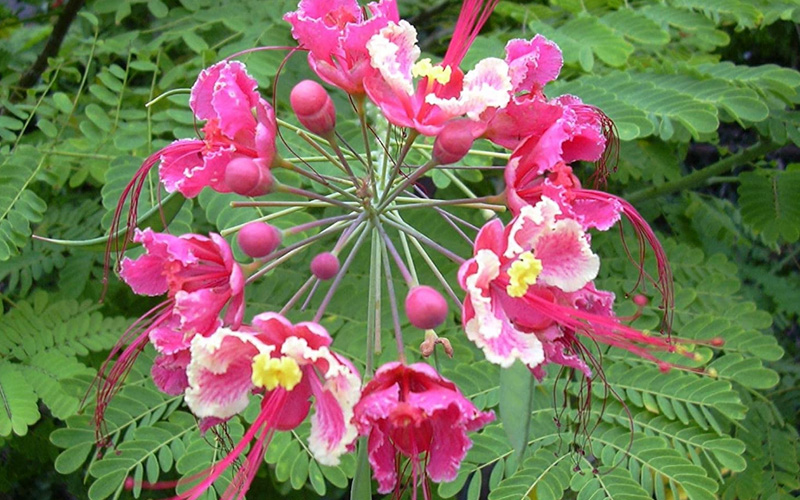
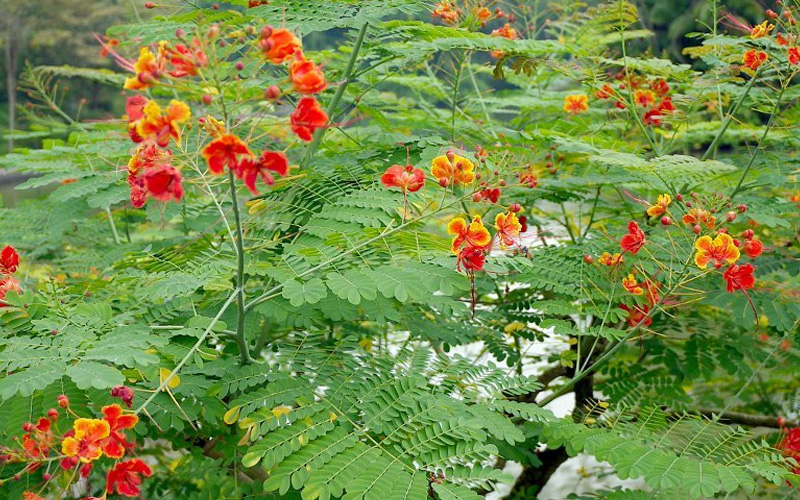
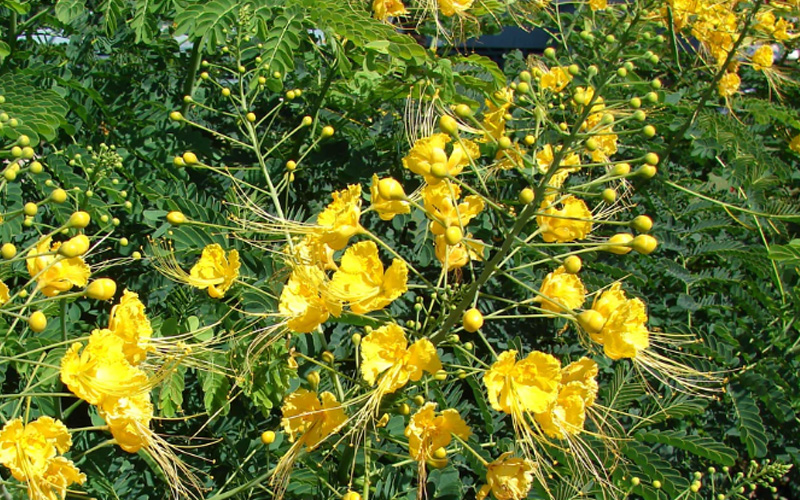
It is a shrub growing to 3 m tall. The leaves are bipinnate, 20–40 cm long,bearing 3-10 pairs of pinnae,each with 6-10 pairs of leaflets 15–25 mm long and 10–15 mm broad. The flowers are borne in racemes up to 20 cm long, each flower with five yellow, orange or red petals. The fruit is a pod 6–12 cm long.
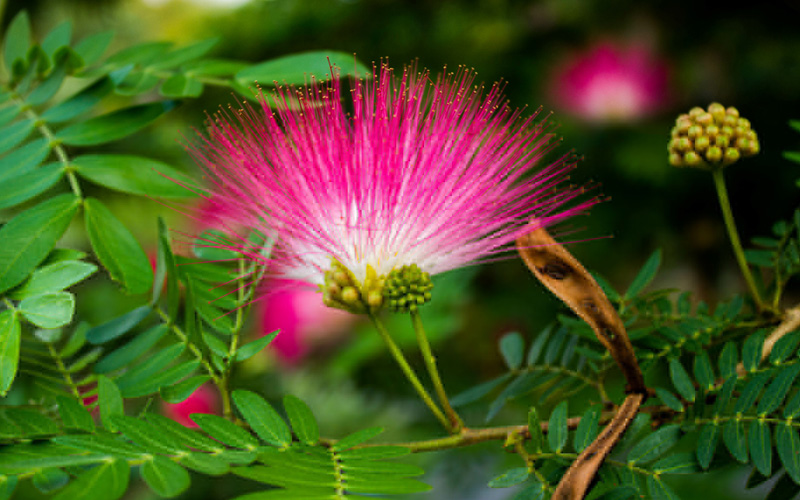
Calliandra brevipes (Pink Powderpuff) is an attractive shrub with finely divided leaves and clusters of red powder-puff flowers. It is native to southeastern Brazil, Uruguay, and northern Argentina.
Portuguese common names include: Esponja, Esponjinha, Manduruvá, Quebra-foice. Botanical synonyms include Acacia selloi Spreng. and Calliandra selloi Macbr.
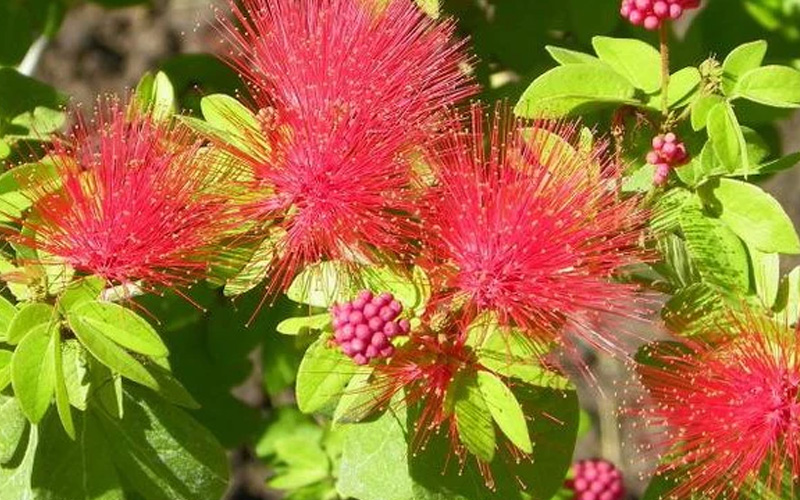
This medium-sized shrub is spectacular when in flower. The blooms are brilliant red and really stand out. The foilage is also attractive with light green kidney shaped leaflets, appearing in pairs. This particular variety grows approximately six to seven feet and is always in bloom. For those interested in bright colours, this is a must. The flowers open 9 to 10 months out of the year (often resting in midwinter) and remain for 6 to 8 weeks, their unusual form and bold color attracting attention despite the plant’s small stature. 1 to 2 inches across, these blooms offer a nice foil to the soft green leaves of this 10 to 14-inch-high tree. Outdoors, the flowers are butterfly magnets, their nectar attracting many winged visitors.
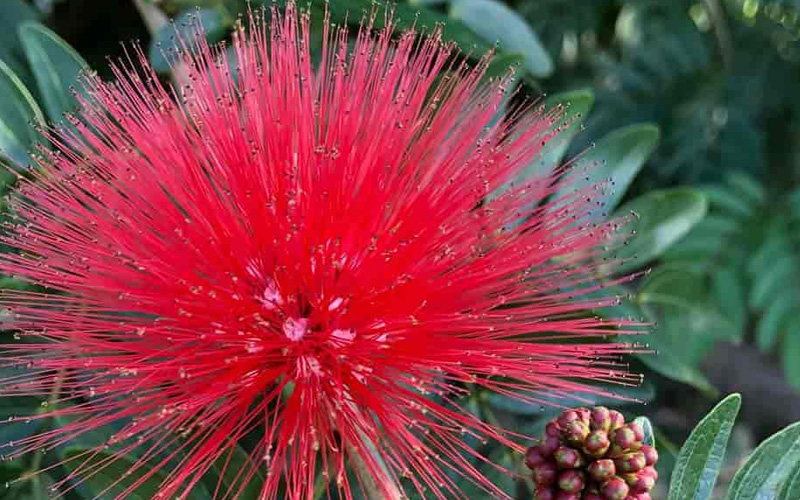
This large, multiple-trunked, low-branching, evergreen shrub has silky leaflets that are glossy copper when new, turning to a dark metallic green. The profuse, fragrant bloom is the main reason for its popularity, with big puffs, two to three inches across, of watermelon pink, deep red, or white silky stamens, produced during warm months.

